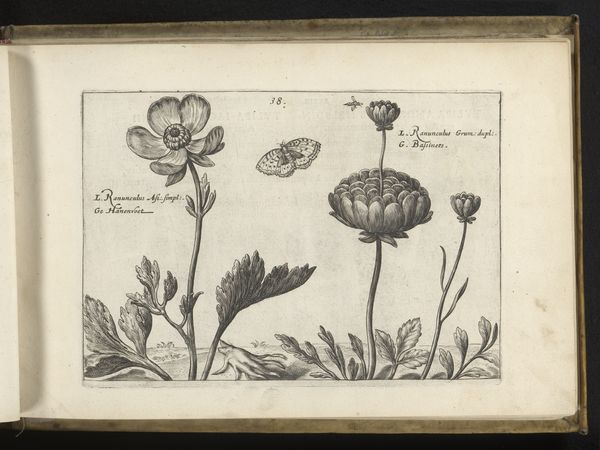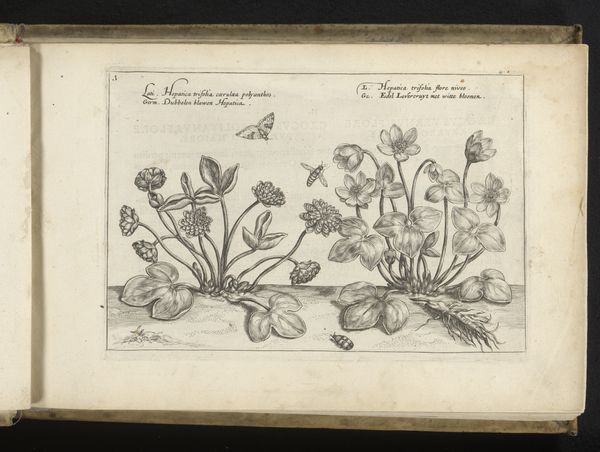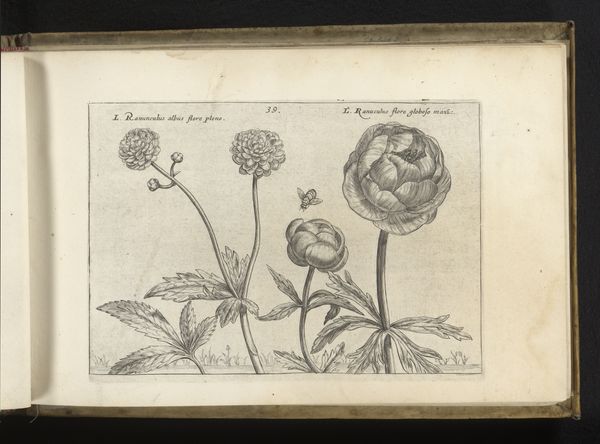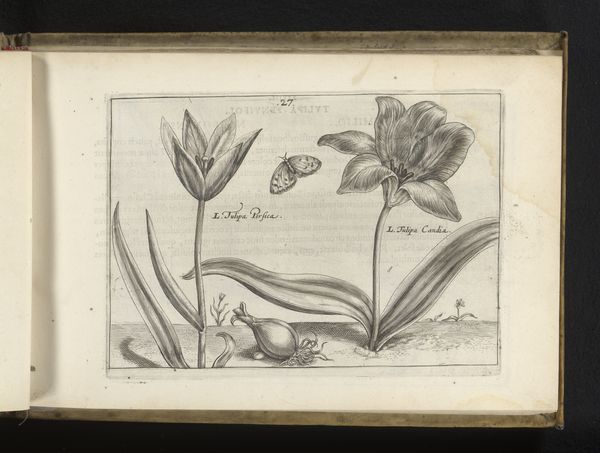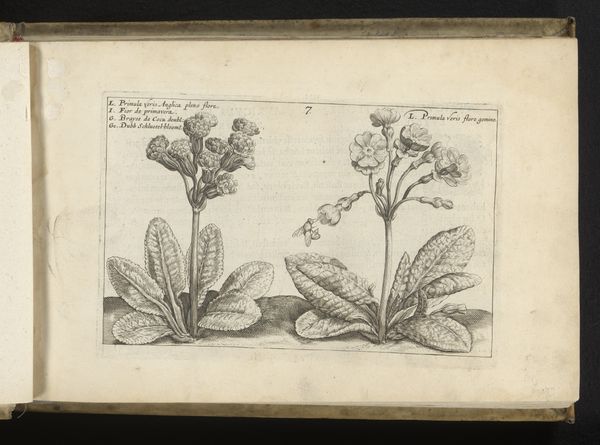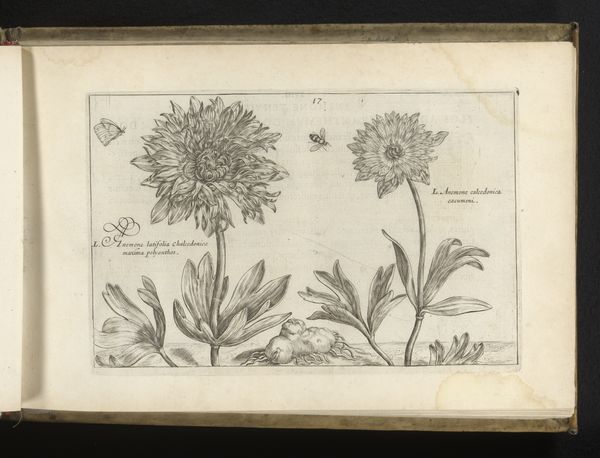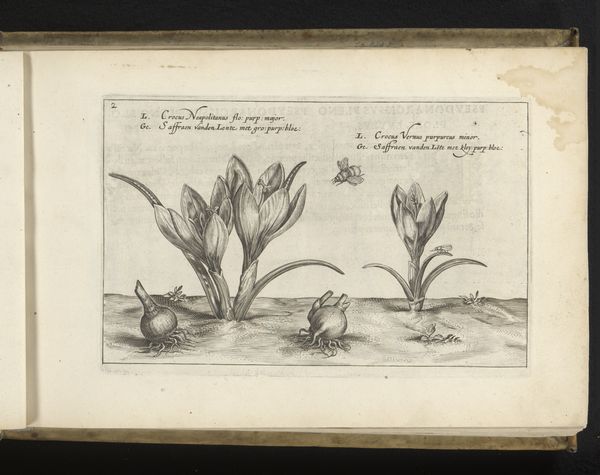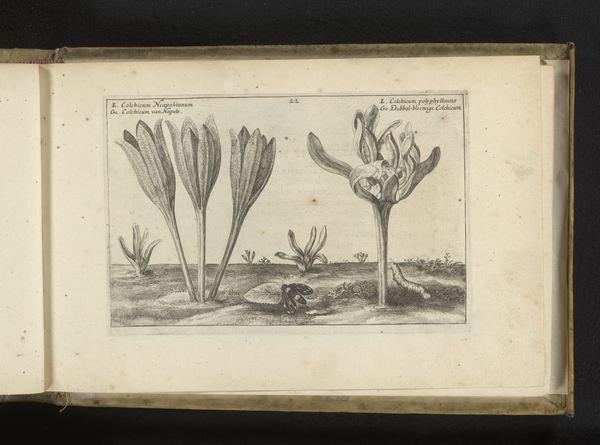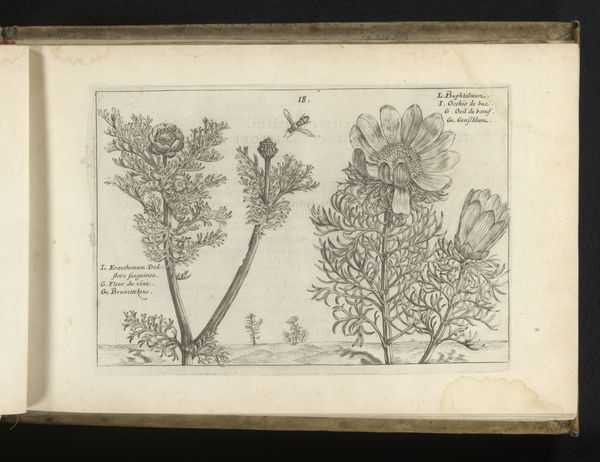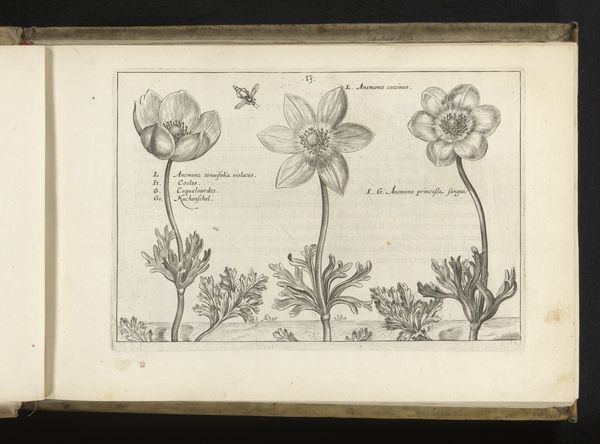
drawing, print, engraving
#
drawing
# print
#
flower
#
11_renaissance
#
engraving
Dimensions: height 140 mm, width 208 mm
Copyright: Rijks Museum: Open Domain
Curator: Here we have "Twee planten uit het genus anemone" which translates to Two Plants of the Anemone Genus. Crispijn van de Passe the Younger created this botanical illustration around 1617. The artist rendered this image with an engraving. Editor: There's a certain serenity to this piece. The precise lines and monochrome palette give it a distilled, almost meditative quality. A very different treatment of nature than the Romantics, for example. Curator: Absolutely. Beyond botanical accuracy, the anemone held layers of symbolic significance. Anemones were said to have sprung from the tears of Venus mourning Adonis, so they're often connected with loss, sorrow, and remembrance. In other contexts, because of their fleeting bloom, they represent the ephemerality of life. Editor: Notice how van de Passe contrasted the forms—the simpler flower on the left, more open, with the almost explosive, dense bloom on the right. This pairing creates a visual tension, almost a dialectic between simplicity and complexity. Curator: Indeed, that opposing of form also speaks to duality. The presence of the bee beside the open blossom becomes an intriguing visual cue. Perhaps indicating a vital life force, the potential for change and rebirth. Editor: And technically, the detail in the leaves and the almost sculptural rendering of the petals demonstrate the engraver's mastery of his tools. Consider how that affects our emotional engagement—it invites prolonged observation, contemplation, like a carefully prepared specimen begging study. Curator: Consider, too, how the clean aesthetic appealed to alchemists or physicians studying the potential medicinal qualities, emphasizing the flowers' natural perfection. It represents not only nature’s beauty but a symbolic promise for human well-being and resilience. Editor: Right, not simply decoration, but documentation imbued with philosophical weight. I see it as less about direct religious narrative and more about reflecting on life cycles as expressed via detailed form. Curator: I see that, too. It’s a blend of naturalism, science, and subtle cultural coding from another age—it reminds me how rich images were. Editor: Agreed. Each time one looks at a piece like this, it whispers different aspects of history—aesthetic or scientific, but all echoing a certain humanity in any case.
Comments
No comments
Be the first to comment and join the conversation on the ultimate creative platform.
